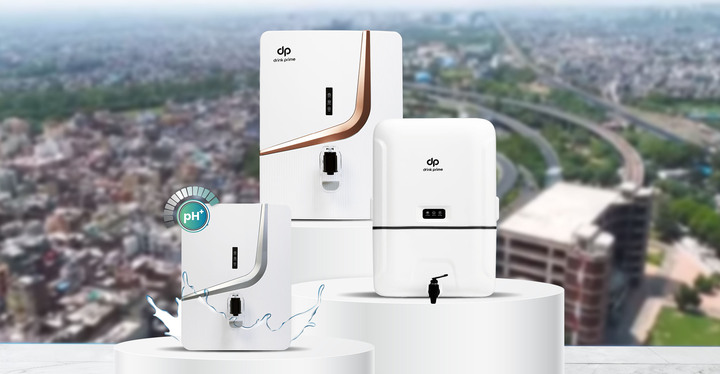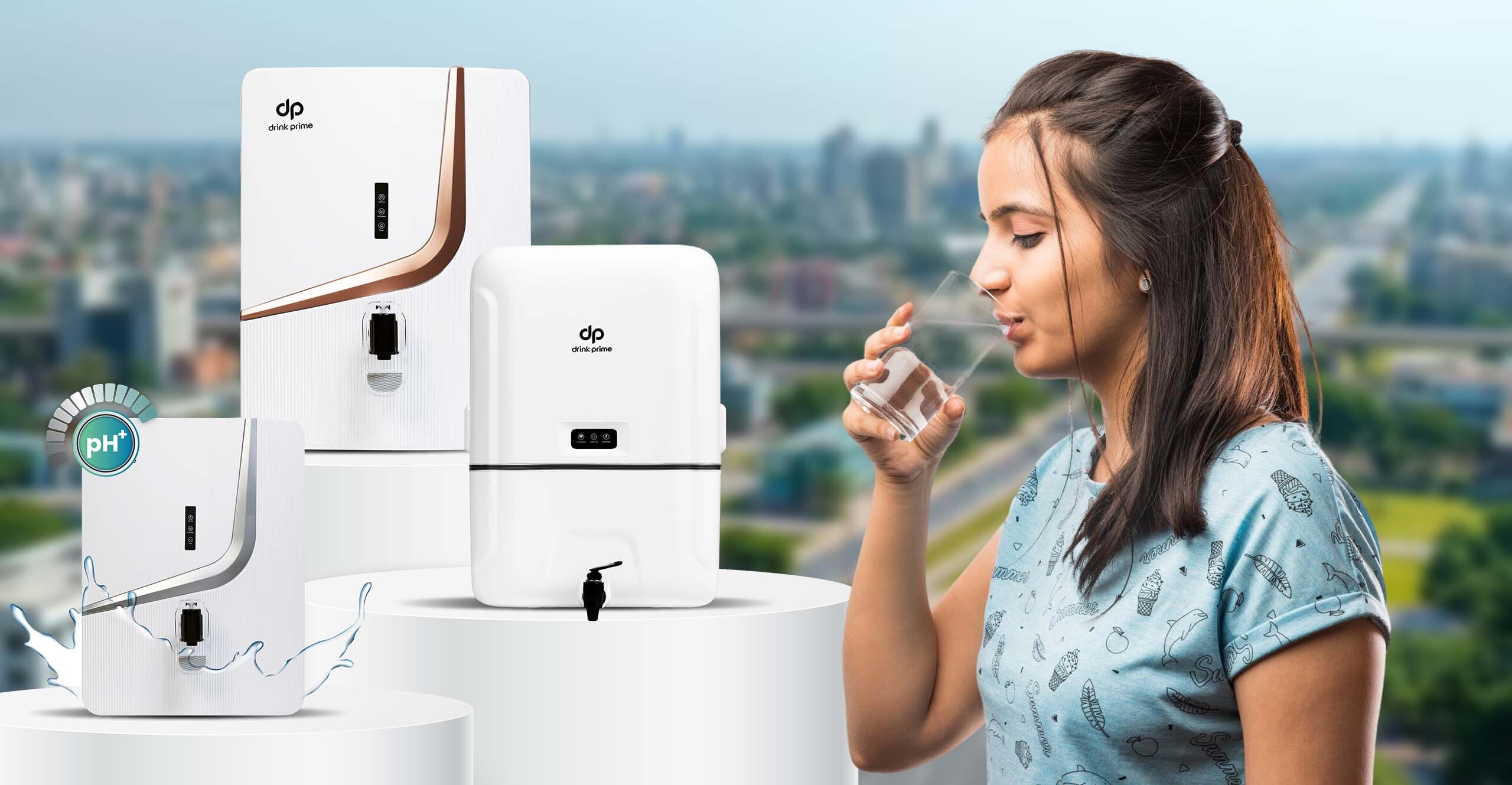Sometimes, when we think about environmental health factors and personal well-being, air pollution often takes charge. We tend to wear masks, install air purifiers, and also check the air quality index before stepping out. But have you ever wondered about the silent contributor to health that deserves equal attention, and that is water quality?
Water is a major solvent in our lives. We consume it, cook it, and use it in several other ways as well. Are you wondering why water quality is as important as air quality? In this blog, we will explore the health risks that are caused by poor-quality water and understand why water quality needs the same attention as air quality.
Why Water Quality Matters?
A basic human need is clean drinking water that affects health, well-being, and daily living. Here are the reasons why water quality matters the most:
Hygiene and Health
Most contaminated water can carry harmful bacteria, viruses, and chemicals that cause diseases like dysentery, cholera, and lead poisoning.
Daily Consumption
We use water for brushing, bathing, and drinking, and any contamination can directly enter the system and cause several digestive problems.
Food Safety
Water is also used in agriculture and food processing. So, poor-quality water can impact not just the crops but also livestock and eventually the food we consume as well.
Home Appliances and Plumbing
Sometimes hard water or water with high mineral content can effectively damage plumbing systems, which will reduce appliance efficiency and increase the maintenance costs.
Factors Affecting Water Quality
Pollution and Human Activity
Pollution and human activities pose significant risks to our drinking water. Additionally, improper waste disposal, including the dumping of hazardous materials, sewage leaks, or inadequate wastewater treatment, allows the water to be contaminated.
Infrastructure and Water Treatment
Moreover, old or corroded plumbing can introduce contaminants like lead. Also, with inefficient or outdated treatment processes can fail to remove all the harmful substances effectively. Also, such contamination can occur during water storage or as it travels via the supply network.
Land Use Practices
Excessive irrigation, pesticide use, and livestock farming in agriculture significantly contribute to water pollution via runoffs and groundwater contamination. Such practices introduce harmful chemicals, nutrients, and water into nearby water bodies, disturbing the water quality.
Understanding How does Air Quality Affect Drinking Water Quality
Atmospheric Deposition
Airborne pollutants are not confined to the atmosphere alone, but they find a second home in water bodies via atmospheric deposition. Besides, heavy metals and particulate matter settling on surfaces of rivers and lakes contribute to water contamination, hence posing challenges to maintaining clean drinking water sources.
Acid Rain Effect
The consequence of air pollution extends beyond smog-filled skies to the phenomenon of acid rain. It effectively results in atmospheric pH levels and directly impacts water bodies. Besides, acidification of lakes and rivers poses threats to aquatic ecosystems, mirroring concerns about the quality of our drinking water.
Volatile Organic Compounds
Additionally, some air pollutants infiltrate groundwater sources and pose a direct risk to drinking water quality and potentially introduce some harmful substances to the tap.
Ozone Depletion and UV Radiation
Atmospheric pollution is linked to air quality, which includes ozone depletion. This, in turn, increases the levels of UV radiation that reach the Earth’s surface. This increases UV exposure, which influences water quality, impacting microbes and challenging conventional water treatment processes.
Fine particles
Fine particles present in the air, ranging from soot to dust, travel remarkable distances. So, when they settle down on water surfaces, these particles interact with pollutants, alter the chemical composition of water, and impact human health.
Climate Change Impact
Changes in air quality are not isolated events; they also influence climate patterns. As climate change disrupts precipitation dynamics, the quantity and quality of water resources transform, directly affecting the availability of safe drinking water.
Wildfires and Water Contamination
The increasing frequency of wildfires, often increased by compromised air quality, creates a negative situation for water sources. Runoff from scorched areas carries ash, chemicals, and debris, jeopardizing the suitability of water for drinking purposes.
Ground-level Ozone’s Effect
It increases the levels of ground-level ozone, can harm our lungs, and also affects water quality. Moreover, pollutants from ozone can enter water sources, so it is important to analyse and protect our drinking water.
Sources of Water Pollution
Major Point Sources of Water Pollution
Several identifiable sources that discharge pollutants directly into water bodies include industrial waste containing heavy metals and harmful chemicals, untreated or partially treated sewage and wastewater from households and cities, oil spills that occur during drilling, and thermal pollution caused by industries, which release heated water.
Natural Sources
Also, volcanic activity can release a lot of harmful gases that contaminate water supplies. Moreover, soil erosion introduces sediments into water bodies, hence reducing the clarity and impacting the aquatic life. Additionally, animal waste, particularly from dense wildlife or livestock populations near water sources, can pollute water with all the organic pathogens.
Non-Point Sources of Water Pollution
Agricultural runoff carries pesticides, fertilisers, and animal waste into water bodies, which leads to nutrient pollution. Also, urban runoff occurs when rainwater washes oil, grease, and heavy metals into drainage systems.
Health Risks of Poor Water Quality
Just as breathing polluted air can lead to several issues, drinking contaminated water can also lead to a wide range of health problems.
Waterborne Disease
Several pathogens, like E. coli, Giardia, and Cryptosporidium, can cause severe gastrointestinal problems.
Heavy Metal Contamination
Heavy metals like arsenic, lead, and mercury present in water can effectively damage the nervous system, kidneys, and other vital organs as well.
Toxin Chemicals
Several toxic chemicals, like industrial waste, pesticides, and other chemicals, can easily seep into water sources, which increases the risk of cancer and other reproductive issues.
High TDS and Hard Water
High TDS levels in water can make water hard, which is not suitable for drinking, and it leads to kidney stones and other skin conditions.
Why Water Quality Deserves the Same Attention?
You Consume More Water Than You Realise
While we take a plethora of breaths a day, we also consume water in various ways, like drinking, washing dishes, preparing food, tea, or coffee, and much more. Contaminated water in any of these can effectively cause harm. The risk is not just from what you drink directly but also from the water that is used to prepare your meals as well.
You can’t see Water Quality
Unlike air, which sometimes looks hazy or smells off when polluted, contaminated water is usually invisible to the naked eye. Additionally, this makes it even more critical to analyse, filter, and make sure the water you are drinking is safe, clean, and healthy.
Clean Water Supports Overall Well-Being
From improving digestion and energy levels to making sure skin and kidneys are healthy, safe, and clean, water is foundational to overall well-being. And just like air, which you might not always have control over, the water you drink at home is something that you can take charge of.
DrinkPrime: Your Partner in Safe Hydration
With so many concerns regarding water quality arising, smart water solutions like DrinkPrime come into the picture. Besides recognising the urban water crisis, DrinkPrime offers ideal water purifiers that are designed specifically for all the Indian households that struggle with unpredictable water quality. Unlike old water purifiers, DrinkPrime combines IoT technologies with convenience. Additionally, with real-time water quality monitoring, you know what is in your water at any given moment, hence giving you complete peace of mind. There are no upfront costs, so simply pay a monthly subscription fee, making it easy on your wallet. Also, DrinkPrime offers free maintenance, which means that you never have to worry about costly charges or any unexpected technician visits.
Get 7 Days Risk Free Trial
Conclusion
In conclusion, while we all have become more conscious of the air we breathe every day, now it is time we should give equal attention to the water we drink every single day. Contaminated water can affect your health, just like polluted air. Besides, from hidden toxins and heavy metals to high TDS levels, the risks are often visible and real.
So, priortising clean, safe, and healthy water is not just a choice, but it is a necessity for long-term health and wellness. With solutions like DrinkPrime, ensuring pure water at home has never been easier or more accessible. By choosing the right purifier, you’re not just protecting yourself from waterborne diseases—you’re investing in a healthier future, one glass at a time.




